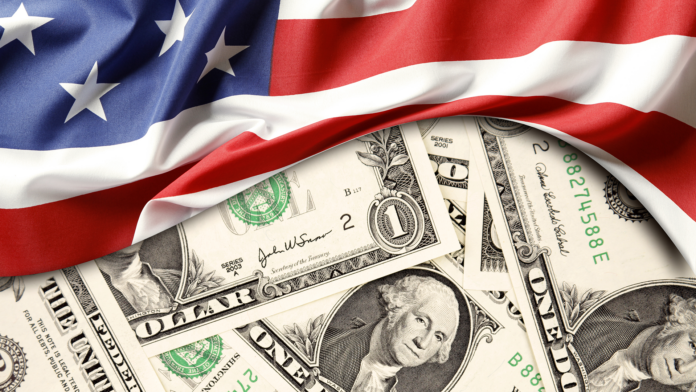The dollar reached new highs on Wednesday as uncertainty over U.S. interest rates and the upcoming presidential election continued to support safe-haven demand.
Risks Point to Dollar Bullishness
The dollar has reached its highest level since early August as positive economic data has reduced expectations of aggressive interest rate cuts by the Federal Reserve.
According to CME FedWatch, traders rate the likelihood of a 25 basis point cut in November at 85.9%, while the probability of rates remaining unchanged stands at about 14.1%.
This shift in expectations has led to a rise in U.S. Treasury yields, with the 10-year yield hitting its highest level in three months this week.
Also supporting the dollar are growing expectations that Republican candidate Donald Trump could win the U.S. presidential election early next month, as his protectionist policies are seen as favorable for the dollar.
“Key market factors continue to support the greenback. We could see some momentum fade today, but the balance of risks remains skewed to the upside ahead of the U.S. election,” analysts at ING noted in a report.
More European Central Bank Cuts on the Way
In Europe, EUR/USD was down 0.1% to 1.0785, with the euro weakening amid rising expectations that the European Central Bank will take a more aggressive approach to rate cuts due to the uncertain growth outlook.
The ECB has already cut rates three times this year, and markets expect further monetary easing at each of its upcoming meetings well into next year.
On Tuesday, the International Monetary Fund stated that Germany’s economy, the largest in the eurozone, will stagnate this year, trimming its growth forecast from 0.2% to 0%.
In addition, inflation in Europe is easing and is likely to return to the 2% target faster than expected, according to ECB President Christine Lagarde on Tuesday, further supporting the case for additional rate cuts.
GBP/USD was down 0.1% to 1.2969 ahead of a speech by Bank of England Governor Andrew Bailey, which could offer more clues on the future of monetary policy.
Bailey said in an interview earlier this month that the central bank could move more aggressively to cut interest rates if inflationary pressures continue to weaken.
Since then, the U.K. inflation rate has dropped to 1.7% year-over-year, marking the first time it has fallen below the bank’s 2% target since April 2021.
Yen Falls Ahead of General Election
USD/JPY rose 0.9% to 152.38, breaking above the 152 level for the first time since July 31, as the latest opinion polls indicate that the ruling Liberal Democratic Party could lose its majority to its coalition partner, Komeito, in the upcoming weekend election.
The risk of a minority coalition government has raised concerns about political instability, which could complicate the Bank of Japan’s efforts to reduce reliance on monetary stimulus.
The BOJ meets next week, though it is unlikely to raise rates. Before that, Tokyo consumer inflation data will be released on Friday.
Canadian Dollar and Chinese Yuan News
USD/CNY was up 0.1% to 7.1265, with attention focused on the upcoming meeting of China’s National People’s Congress, where more signals regarding fiscal spending are expected.
USD/CAD was up 0.1% to 1.3824 ahead of the Bank of Canada’s latest meeting.
“Markets are anticipating a 45 basis point easing by the Bank of Canada today. The reasoning is that inflation has slowed below target and weak growth justifies a faster, 50 basis point move to neutral rates,” ING analysts mentioned. “It’s a very tight decision, but we think 25 basis points is still slightly more likely.”



